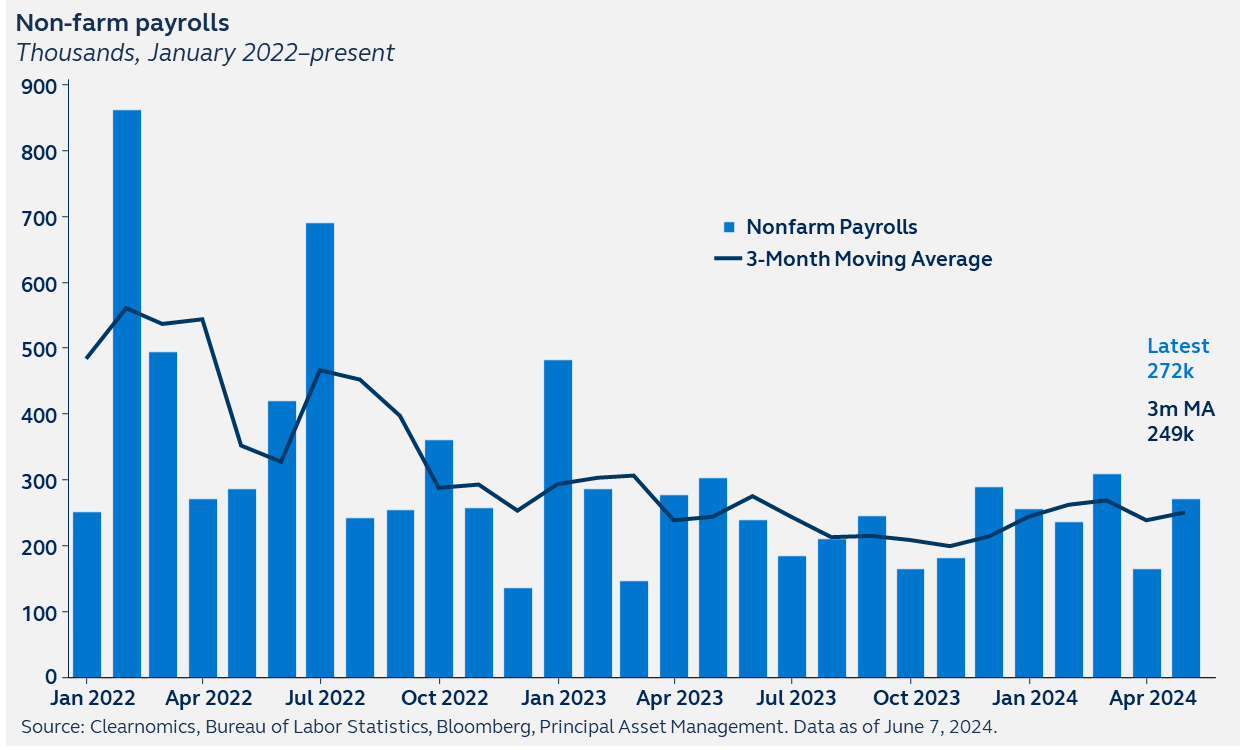One step forward, two steps back - May Jobs Report
Payroll gains were hotter than expected in May,
slamming the door shut on any hopes of a July policy rate cut. The latest jobs
report showed that 272,000 non-farm payroll jobs were added last month,
significantly beating consensus forecasts of 180,000. Wage growth also
surprised to the upside with a 4.1% year-over-year increase in average hourly
earnings. Both measures are moving in the opposite direction to what the
Federal Reserve (Fed) needs to begin easing policy. We still expect the Fed to
cut rates in September, but another set of prints like today's would likely
take that off the table. The positive news, however, is that with a labor
market this strong, the U.S. economy is nowhere near recession territory.

Report details
• May’s report showed some signs of softness despite the headline payroll gains. For instance, the unemployment rate ticked up to 4.0% for the first time since January 2022. The unexpectedly robust hiring came amid an increase in immigration, which provided a boost to labor supply. The under-employment rate (U6) remained flat at 7.4%.
• Additionally, the previous month’s slowdown in jobs was softer than originally reported, with a downward revision from 175,000 to 165,000. Other data suggest that the year-to-date job numbers might be revised down further once the Bureau of Labor Statistics makes annual revisions. (This occurs yearly based on sources such as the Quarterly Census of Employment and Wages data.)
• Job gains were quite strong across many industries. Leisure and hospitality trended up, with 42,000 new jobs in May. Government employment also increased, adding 43,000 jobs. Professional, scientific, and technical services added 32,000 jobs, boosted by a 14,000 increase in management, scientific, and technical consulting services. Continued hiring activity suggests that companies remain confident despite pressure from high interest rates.
Policy outlook
After
a weaker jobs report in April, the May data indicates that hiring has picked
back up. Jobs and wages are both moving in the opposite direction to what the
Fed needs to see to begin easing policy. This is further complicated by rate
cut moves in other regions, including the ECB and Bank of Canada. That said,
unless there are additional jobs reports of this magnitude, the Fed is still likely
to be on track for a September cut.

